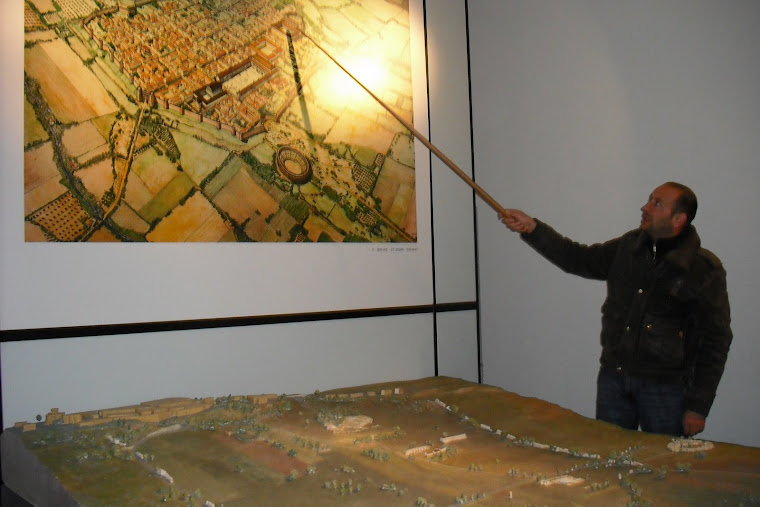Caravaggio (Michelangelo Merisi) (1571–1610) and his Followers
Trained in Milan and active in Rome (1592–1606), Naples (1606–7; 1609–10), Malta (1607–8), and Sicily (1608–9), Michelangelo Merisi da Caravaggio (1571–1610) was one of the most revolutionary figures of European art. His practice of painting directly from posed models violated the idealizing premise of Renaissance theory and promoted a new relationship between painting and viewer by breaking down the conventions that maintained painting as a plausible fiction rather than an extension of everyday experience. In early work such as The Cardsharps (ca. 1594; Kimbell Art Museum, Fort Worth), Caravaggio appropriated a scene of street life—a gullible, well-dressed youth being taken in by professional cheats—and, by abstracting it against a plain background and focusing on the expressions and actions of the various figures, gave it an artistic as well as moral interest.

The analogy is with contemporary popular theater. This much-copied picture was purchased by Cardinal Francesco Maria del Monte, who gave Caravaggio quarters in his palace and promoted the artist, securing for him his first ecclesiastical commission—the crucial step to fame.
Source: Caravaggio (Michelangelo Merisi) (1571–1610) and his Followers Thematic Essay Heilbrunn Timeline of Art History The Metropolitan Museum of Art
Caravaggio's two canvases, the Calling of Saint Matthew and the Martyrdom of Saint Matthew (San Luigi dei Francesi, Rome), were unveiled in 1600, and established his reputation. The combination of figures in contemporary dress inhabiting a religious scene was not new, but the impression the picture made of an event from the distant past unfolding before the viewer's own eyes was unmatched. Caravaggio pushed the figures up against the picture plane and used light to enhance the dramatic impact and give the figures a quality of immediacy. These devices were much imitated. As a contemporary critic noted, "a characteristic of this school [of painting] is to use a focused light source from high up, without reflections, as though in a room with a [single] window and the walls painted black. In this fashion the lit and shadowed areas are very light and very dark and give enormous three-dimensionality to the painting, but in an unnatural fashion neither done or even conceived before by such artists as Raphael, Titian, Correggio, or others." What was at issue was not a descriptive naturalism, but a provocative insistence on the physical reality of the scene portrayed.

This new approach to painting was sometimes at odds with the function of the altarpieces as the focus of devotional practice. Should a depiction of the death of the Virgin emphasize the theological importance of the event and show the Madonna as the ageless mother of Christ, as worshippers had come to expect, or should it emphasize the physical reality of death—as Caravaggio's painting seemed to do (Death of the Virgin, Musée du Louvre, Paris)? Should Christ's burial be depicted as a tragic drama or as a sacred event? Much of Caravaggio's work, such as his spellbinding Beheading of Saint John the Baptist, reveals the artist dealing with these crucial issues. In his last paintings, such as The Denial of Saint Peter (1997.167), he revealed the psychological rather than merely physical dimension of the narrative.
Source: Caravaggio (Michelangelo Merisi) (1571–1610) and his Followers Thematic Essay Heilbrunn Timeline of Art History The Metropolitan Museum of Art
Caravaggio's key Italian propagator was Bartolomeo Manfredi, whose gambling and drinking scenes (Bacchus and the Drinker, Galleria Nazionale d'Arte Antica, Rome), and gypsy fortune tellers were widely imitated. Caravaggio's art was particularly popular among foreign painters in Rome—the Dutchmen Hendrick ter Brugghen (56.228) and Gerrit van Honthorst, the French painters Valentin de Boulogne (Fortune Teller with Drinkers, Toledo Museum of Art, Ohio, and The Luteplayer, (2008.459) and Nicholas Tournier, and the Spaniards Juan Bautista Maino and Jusepe de Ribera (copies of his work may have been known by Velázquez [14.40.631] and Zurbarán. Through them, Caravaggism became an international movement and one of the keystones of Baroque painting.

Source: Caravaggio (Michelangelo Merisi) (1571–1610) and his Followers Thematic Essay Heilbrunn Timeline of Art History The Metropolitan Museum of Art











